Rising Seas Threaten Key Military Bases
By Kate Sliney
Rising sea levels expose U.S. coastal military installations to risk of damage via storm surge and tidal flooding, hampering its ability to protect the security of the country.
1. Naval Air Station Key West
The Naval Air Station at Key West will be one of the most dramatically affected U.S. military installations. Just 3 feet in sea level rise will put 87% of the base underwater.
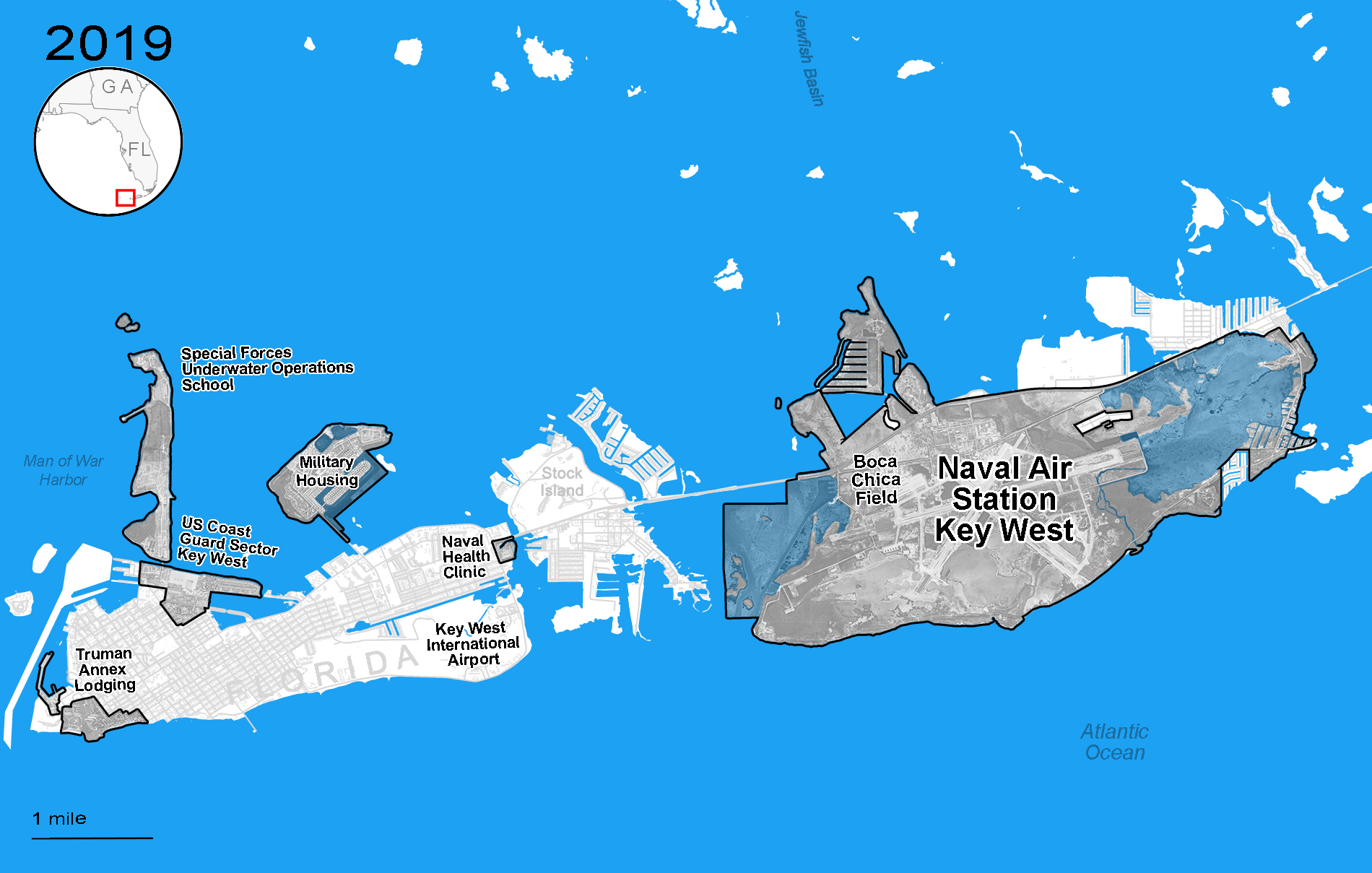
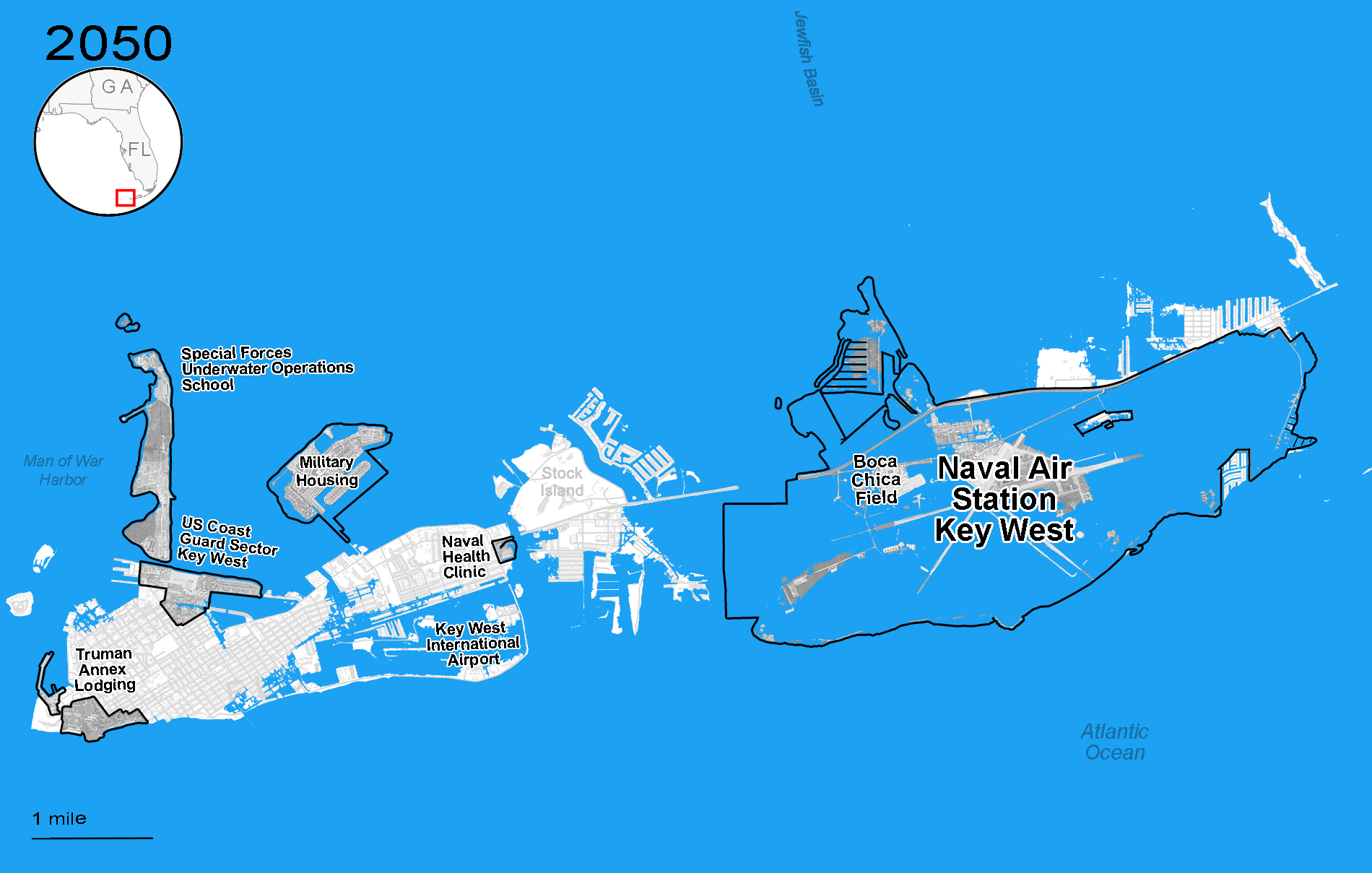
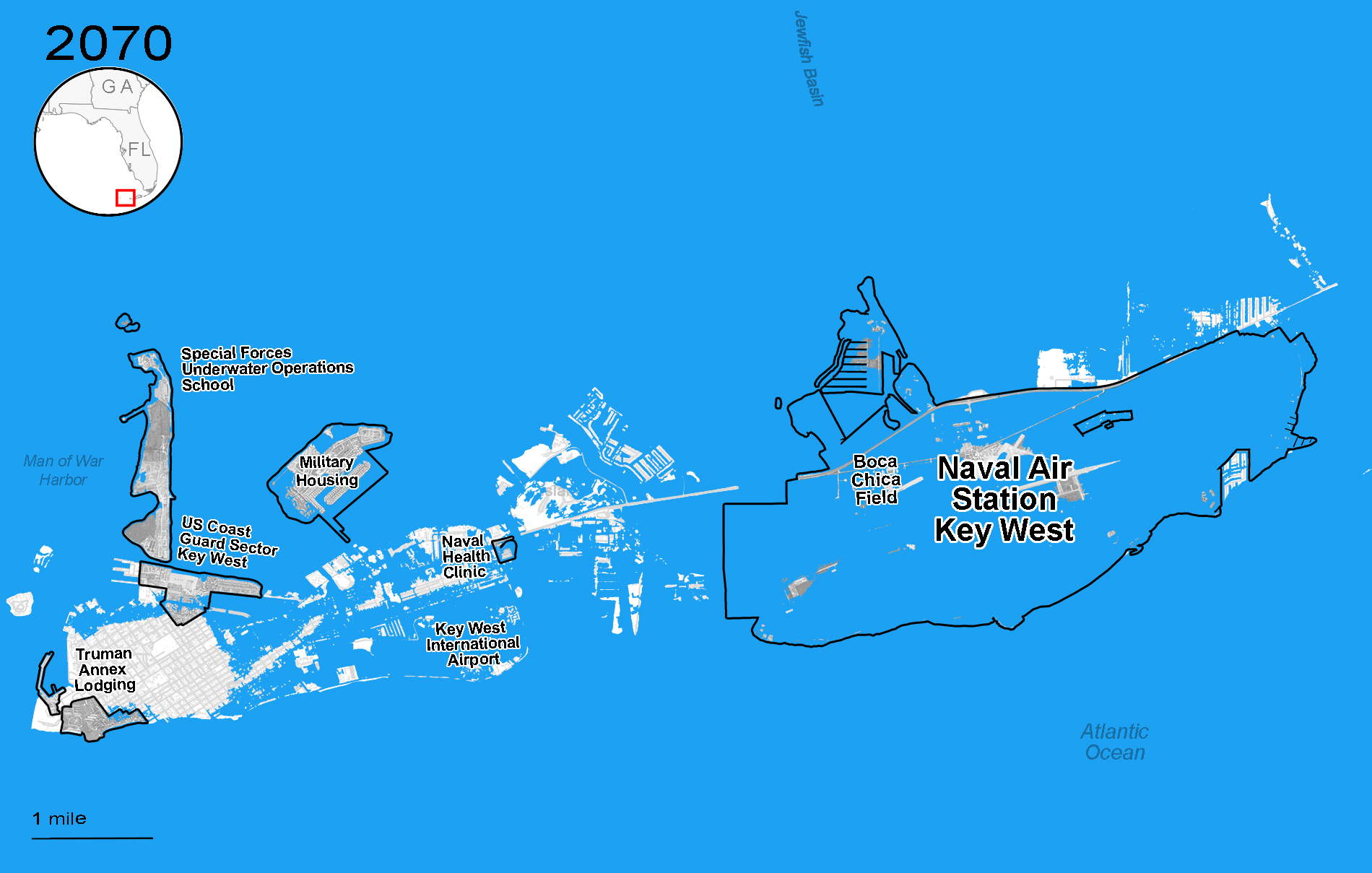
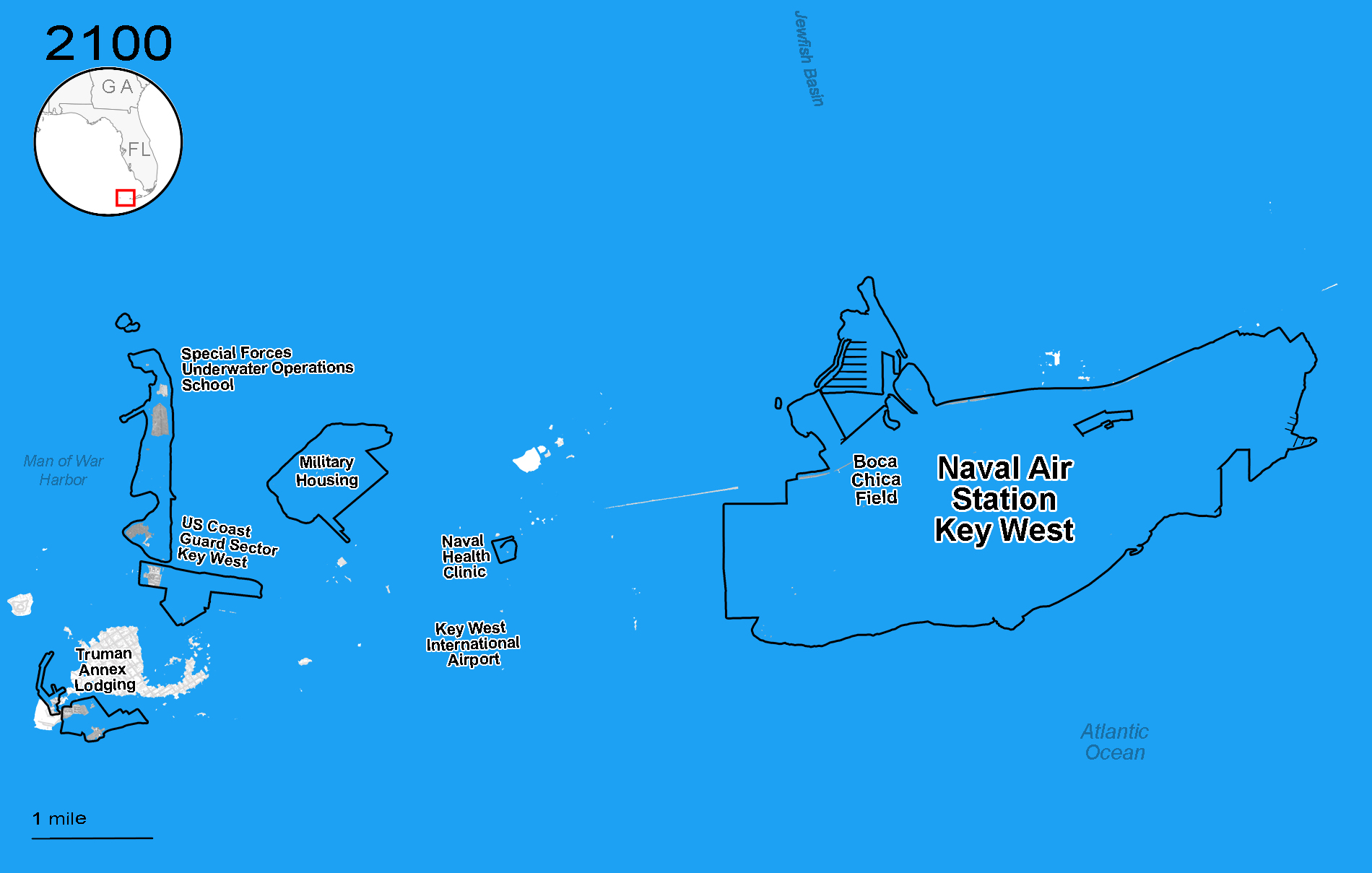
Source: National Oceanic and Atmospheric Administration; Union of Concerned Scientists
2. Langley Air Force Base
Langley hosts the majority of the U.S. military’s F-22s. Already at significant risk for storm surges and flooding, 15% of the base will be underwater at 3ft in sea level rise. At 6ft of sea level rise, another 38% of the base will be covered, leaving half of it will be underwater.
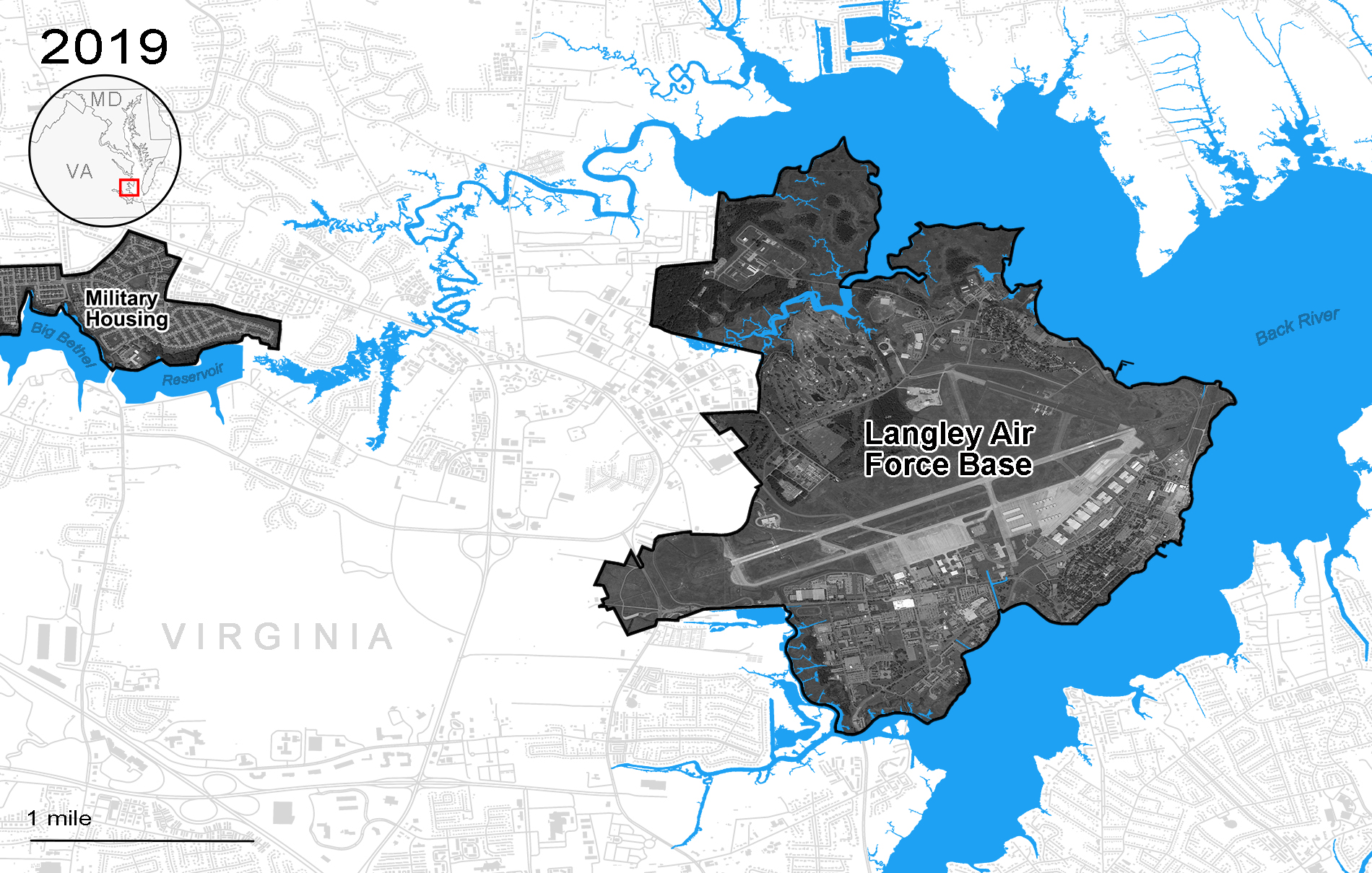
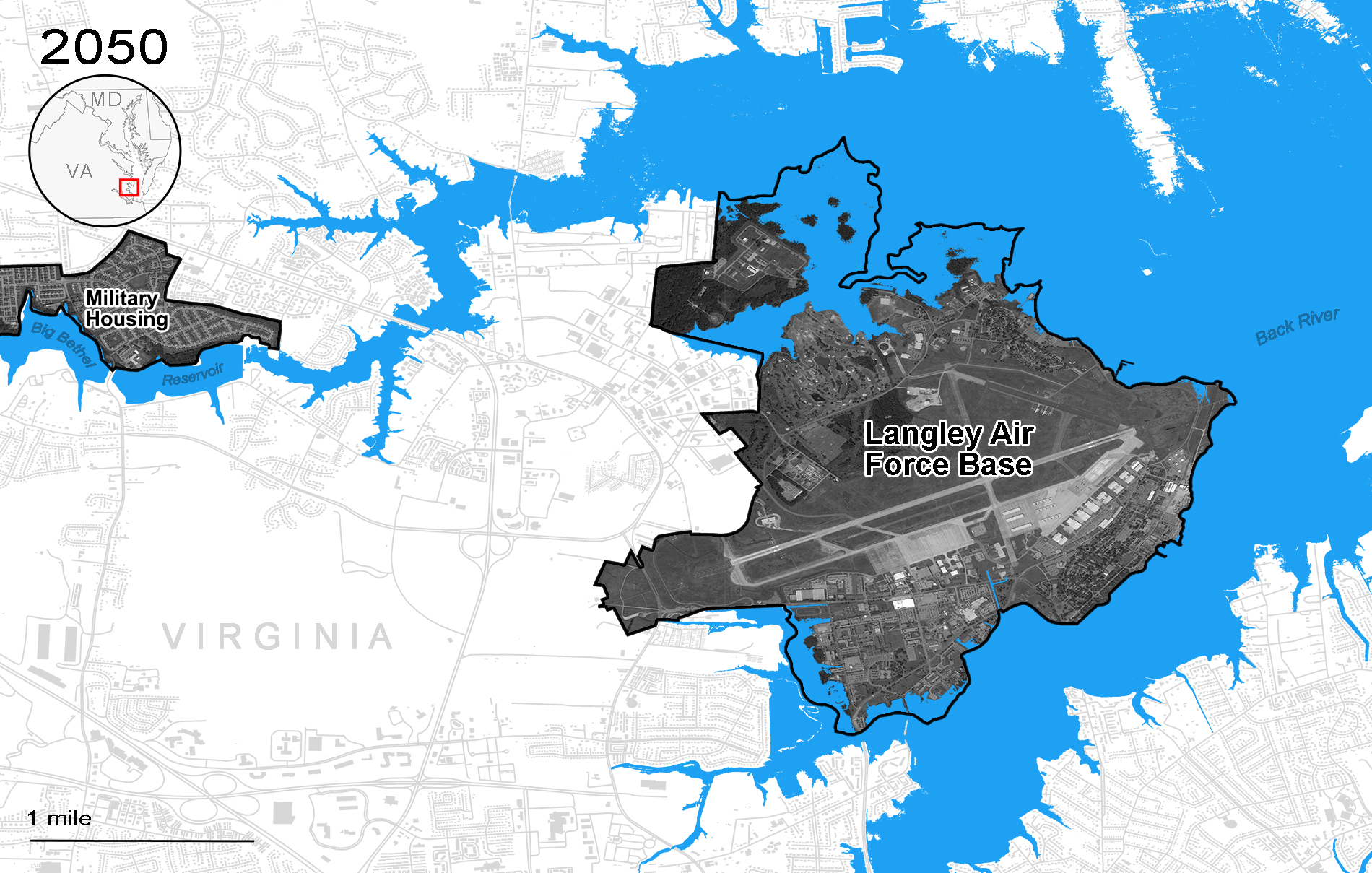
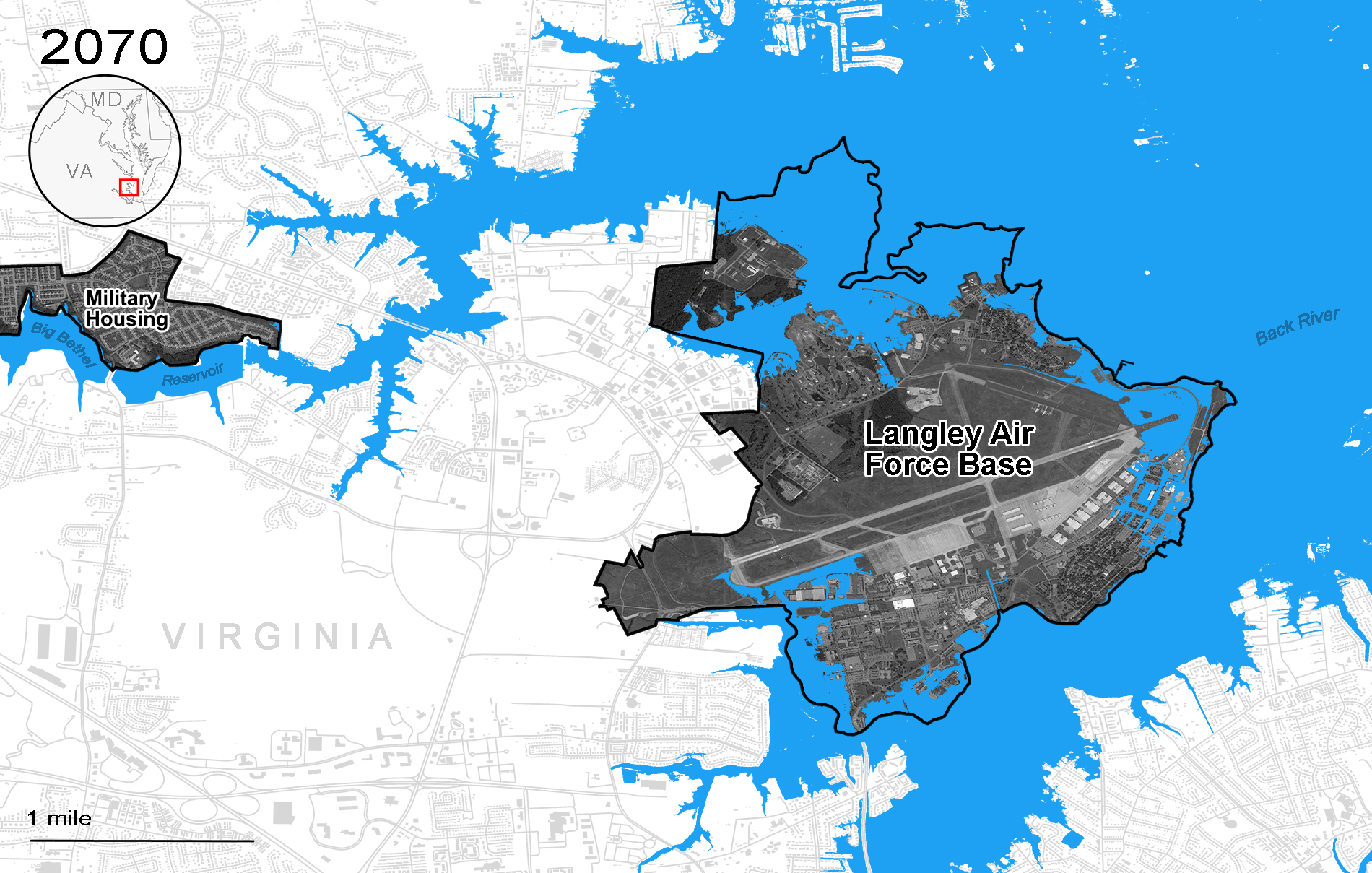
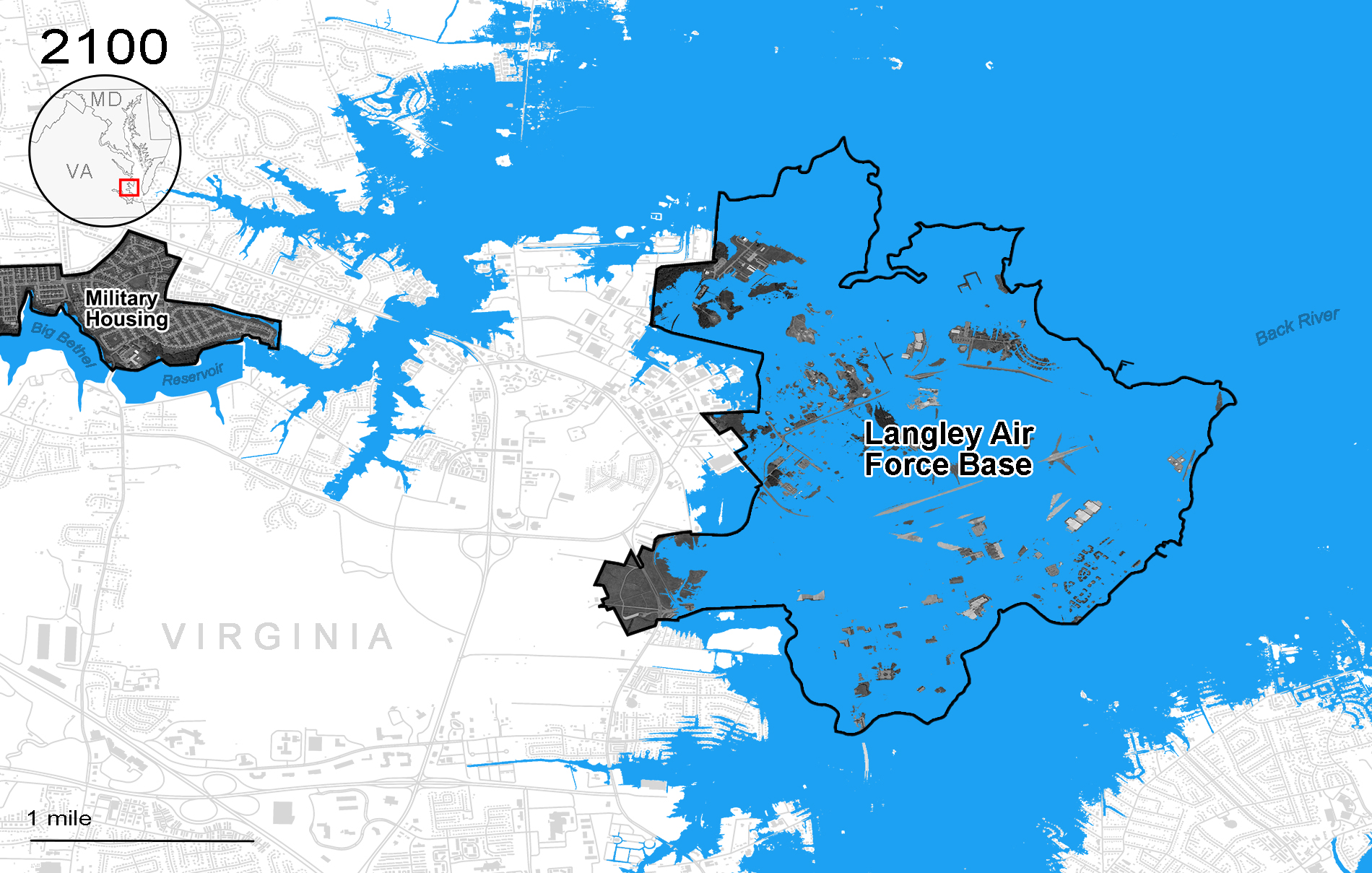
Source: National Oceanic and Atmospheric Administration; Union of Concerned Scientists
3. Marine Corps Recruit Depot, Parris Island
Three additional feet in sea level rise will make the Marine's marshy home to its famous bootcamp a veritable swamp. According the Marine's official website, just over a third of Paris Island's is currently habitable.
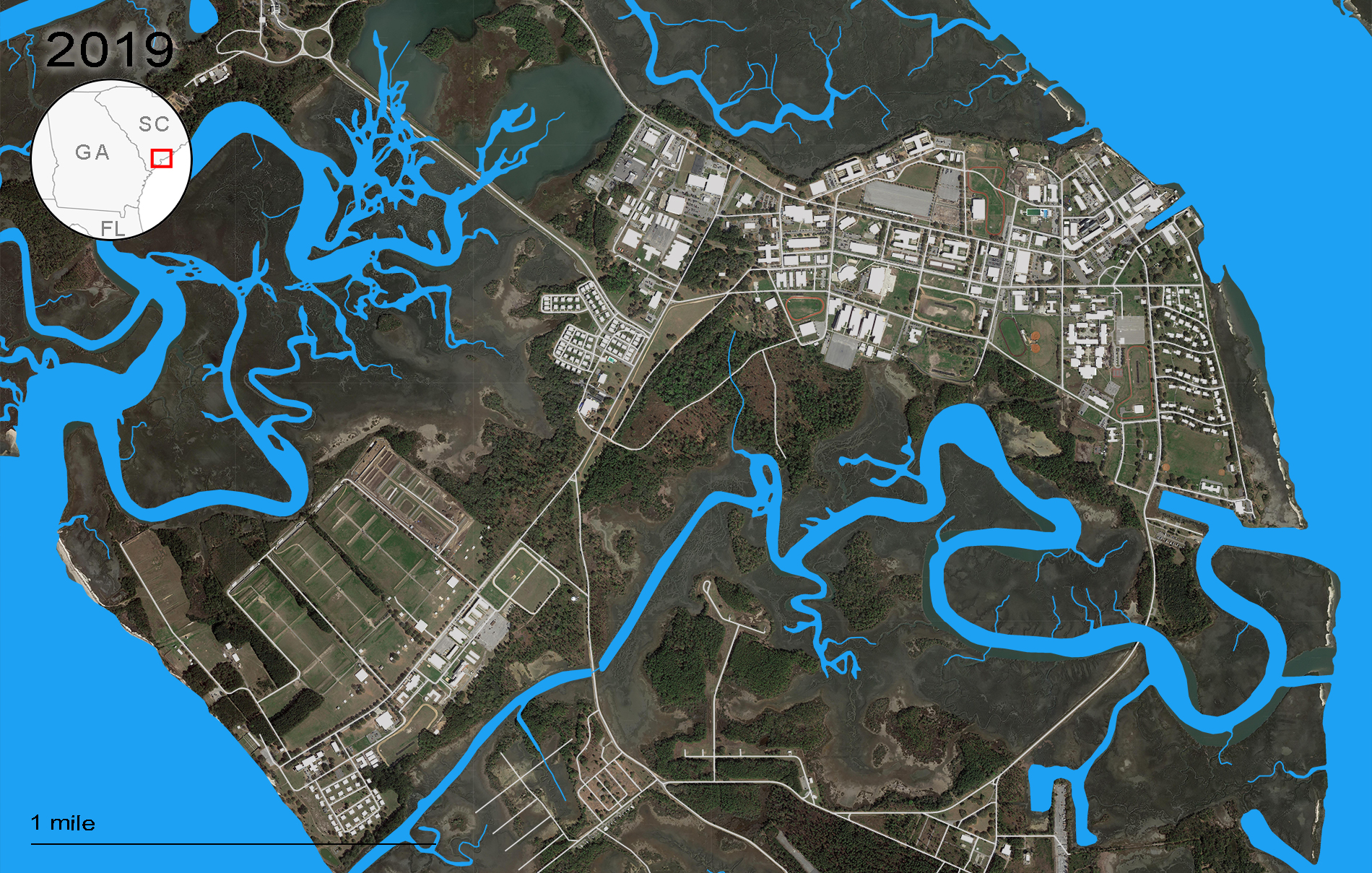
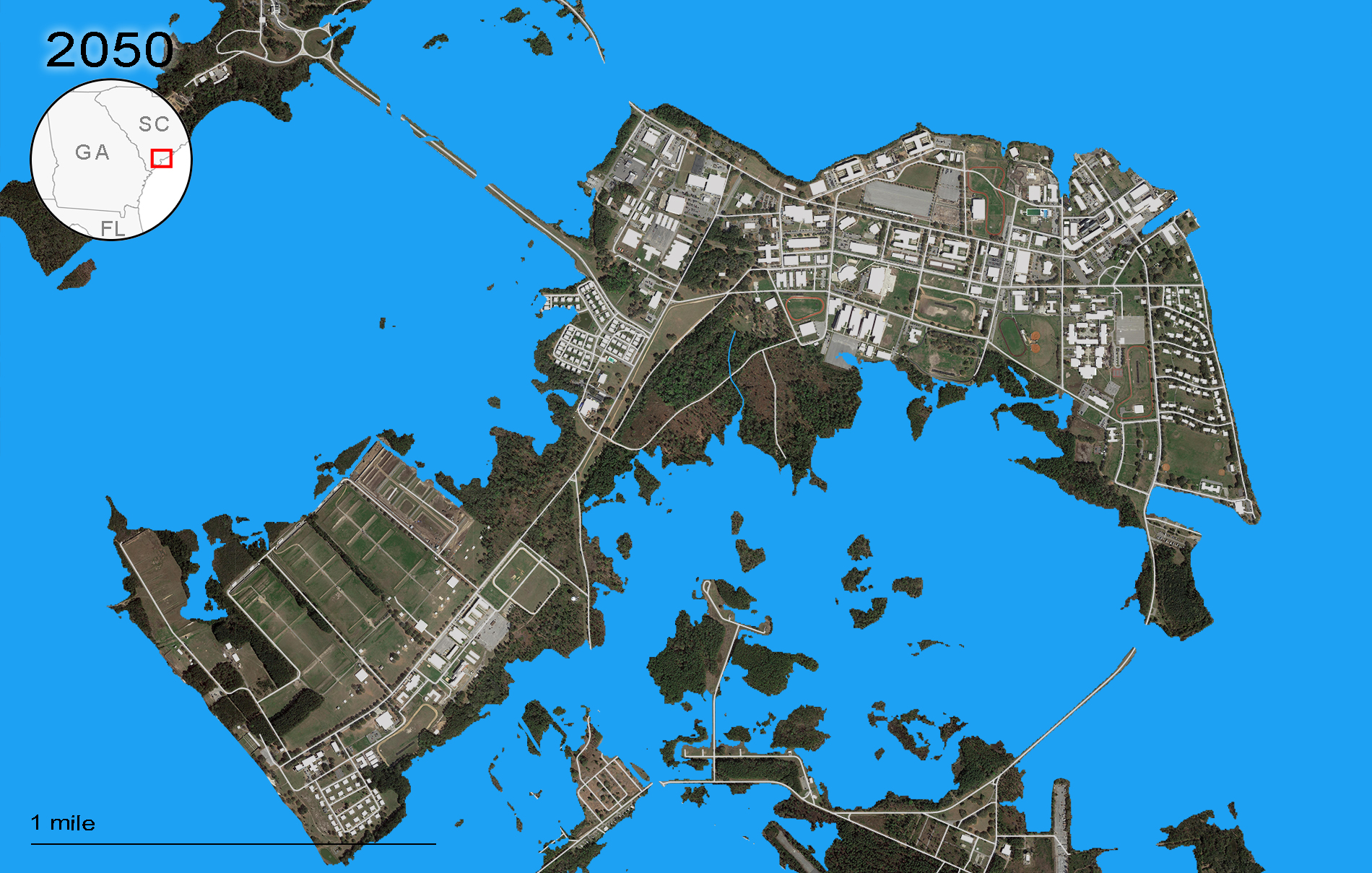
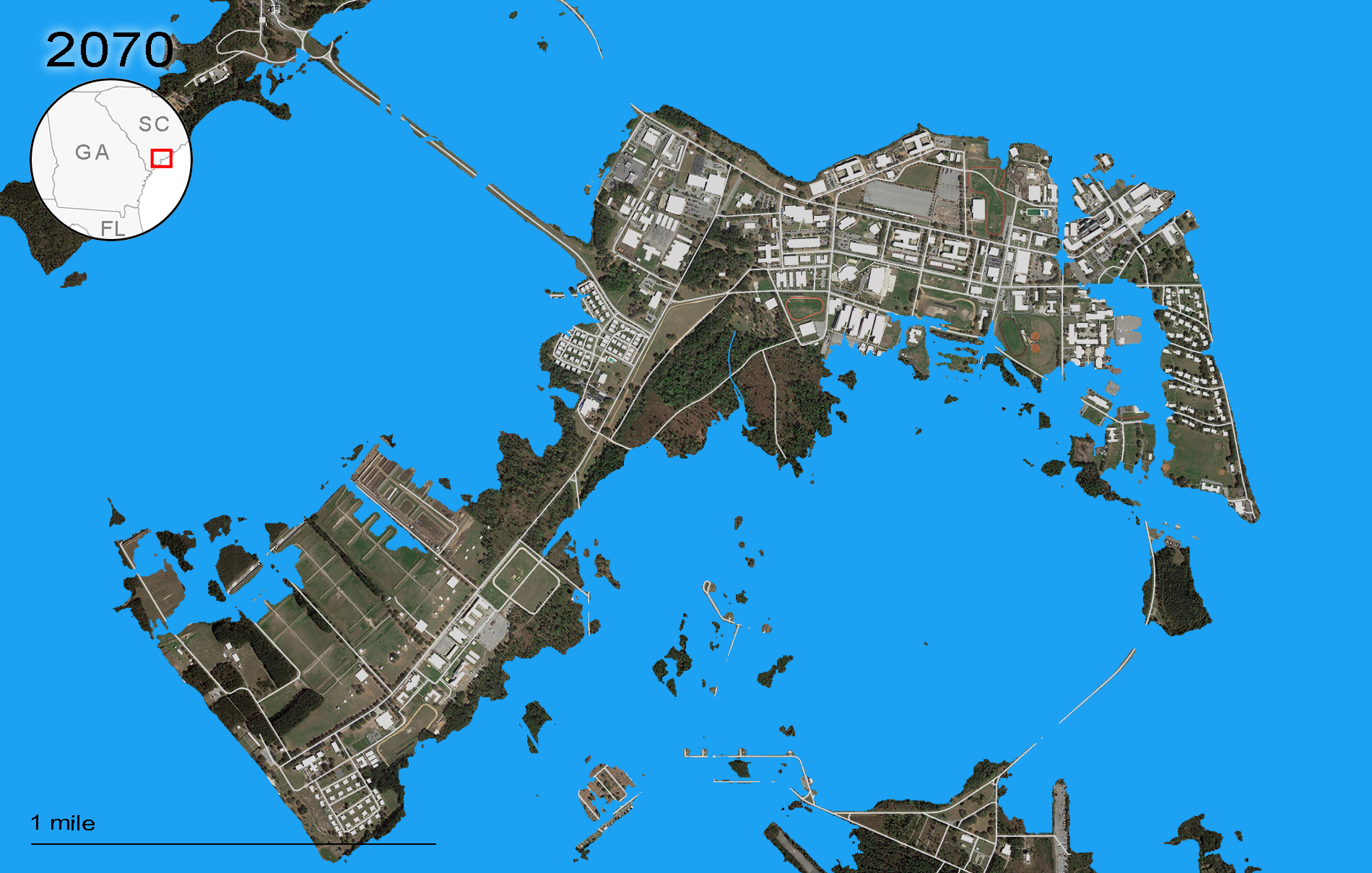
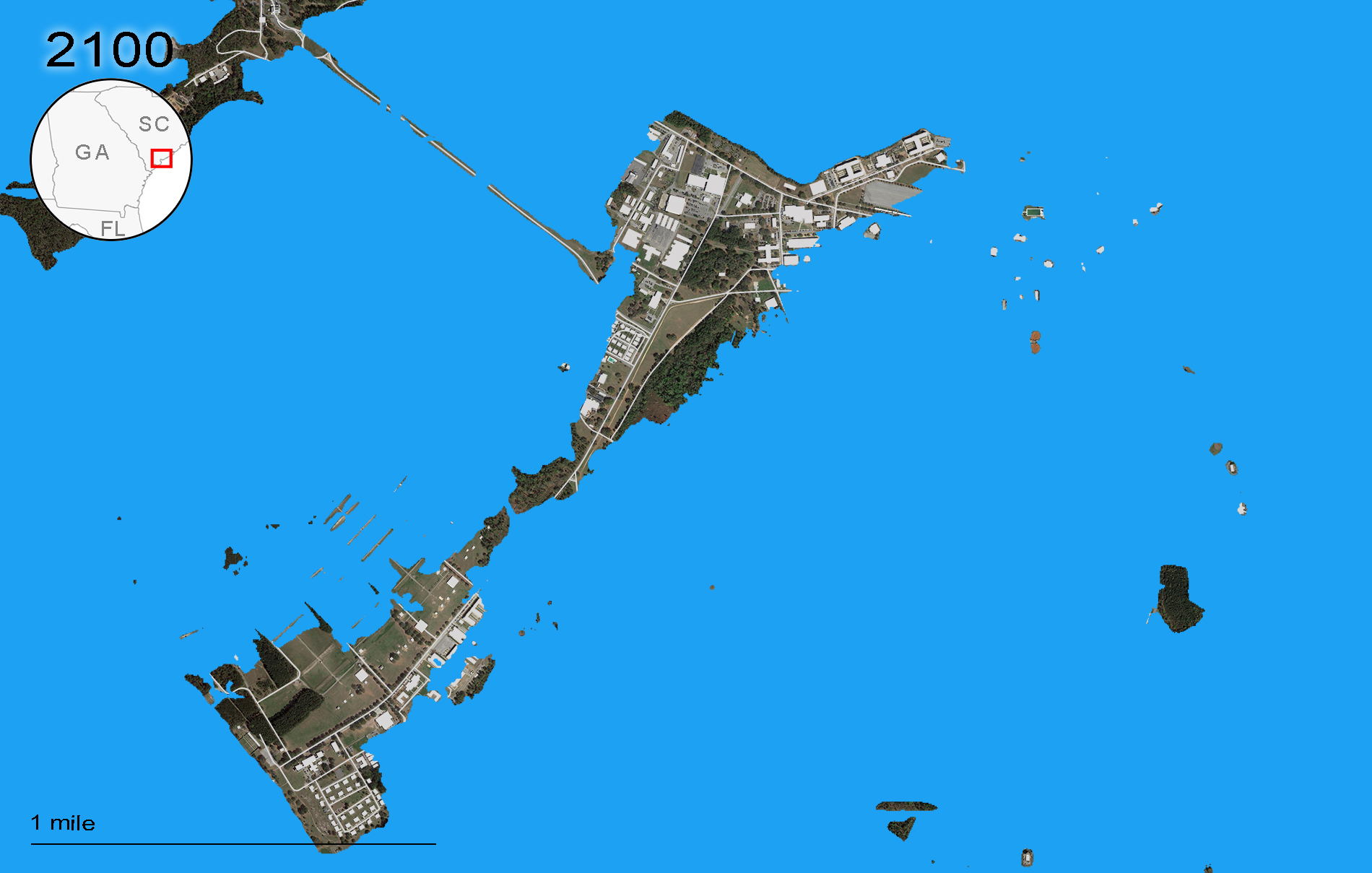
Source: National Oceanic and Atmospheric Administration; Union of Concerned Scientists
4. Naval Submarine Base Kings Bay
The Navy homeports nuclear-powered submarines with ballistic missiles at Kings Bay, and uses on base training facilities to teach sailors to operate submarines. In the highest scenario, sea levels are project to rise 6ft by 2100, causing greater exposure to severe flooding throughout the year.
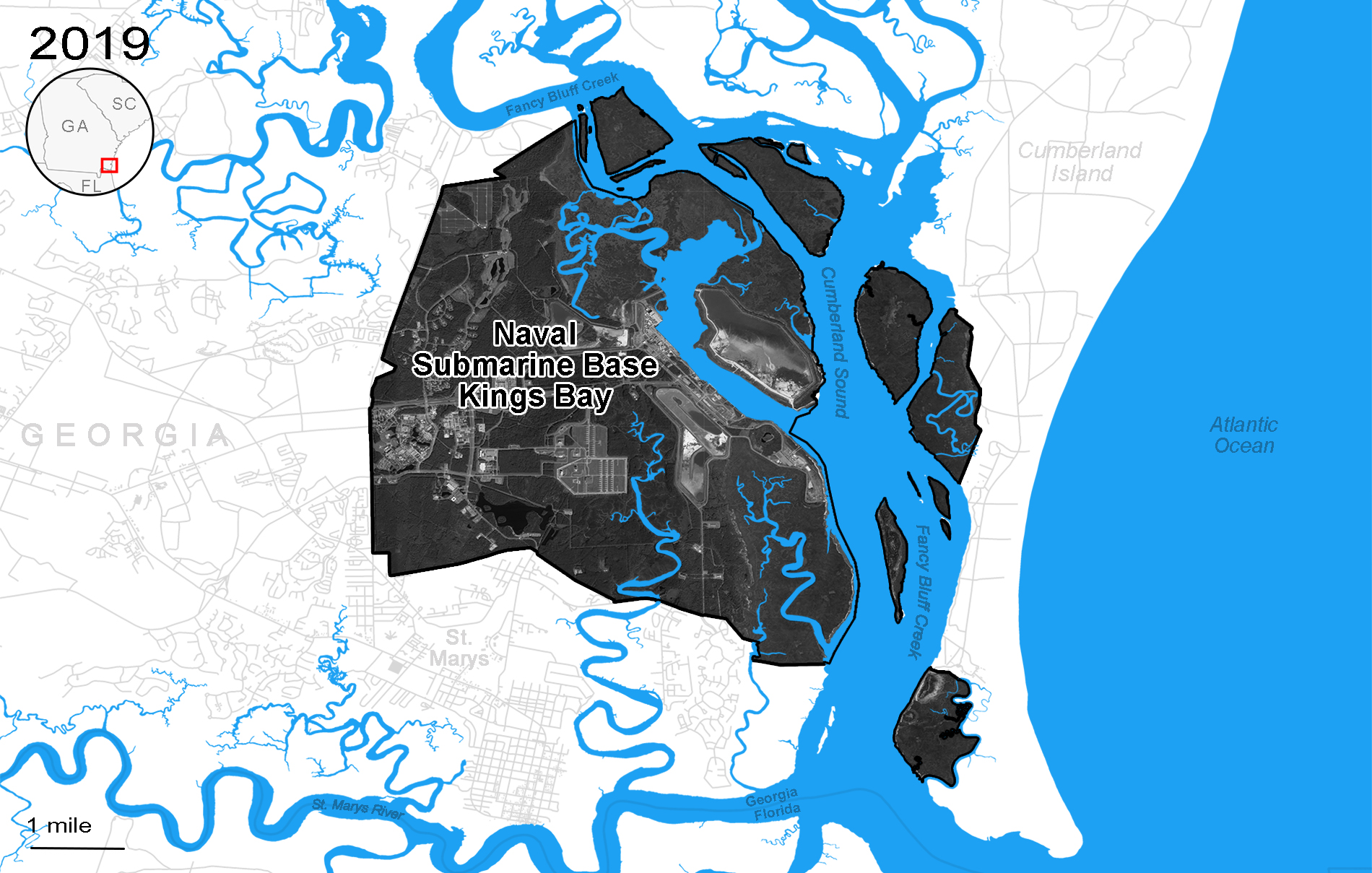
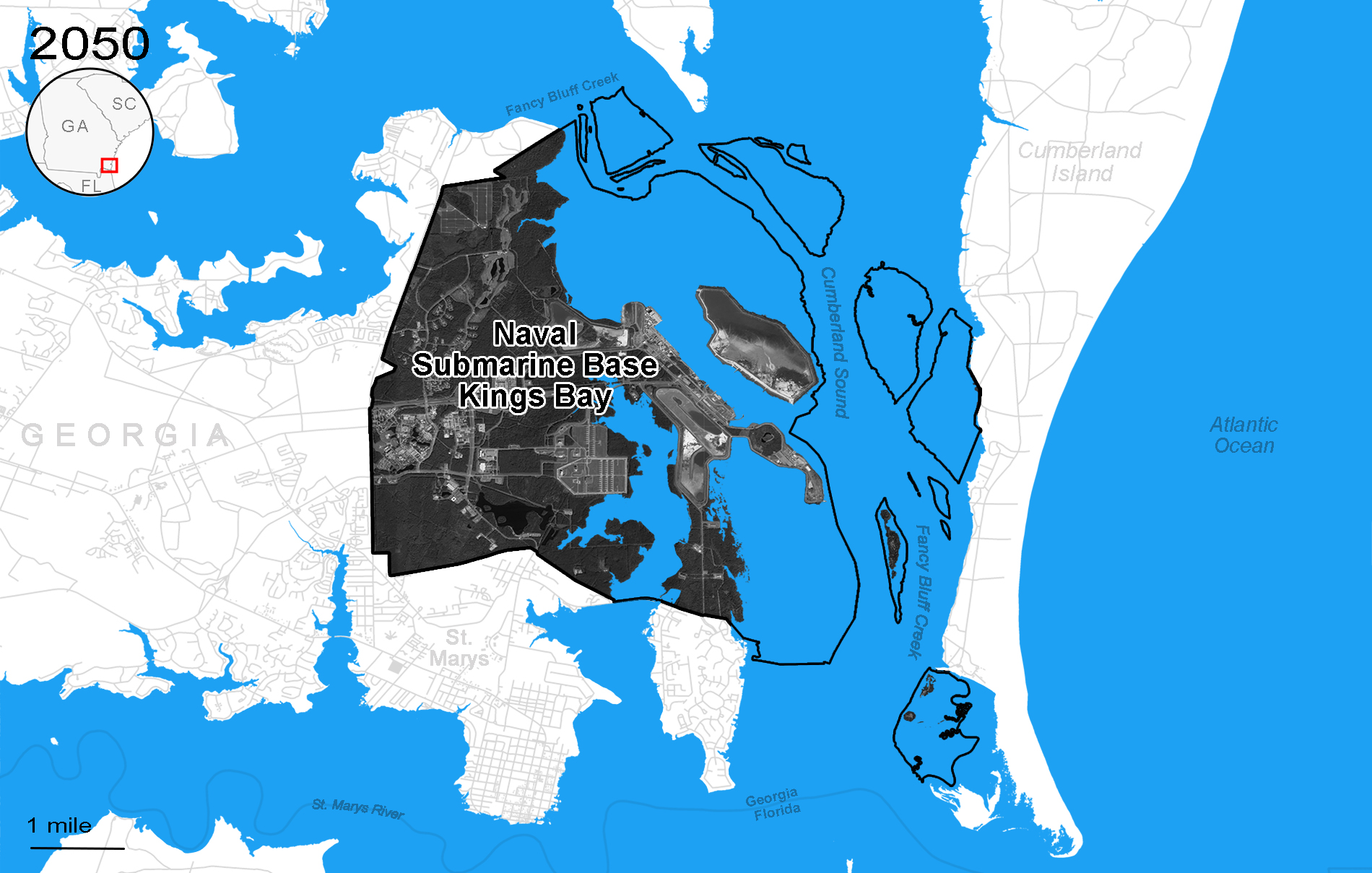
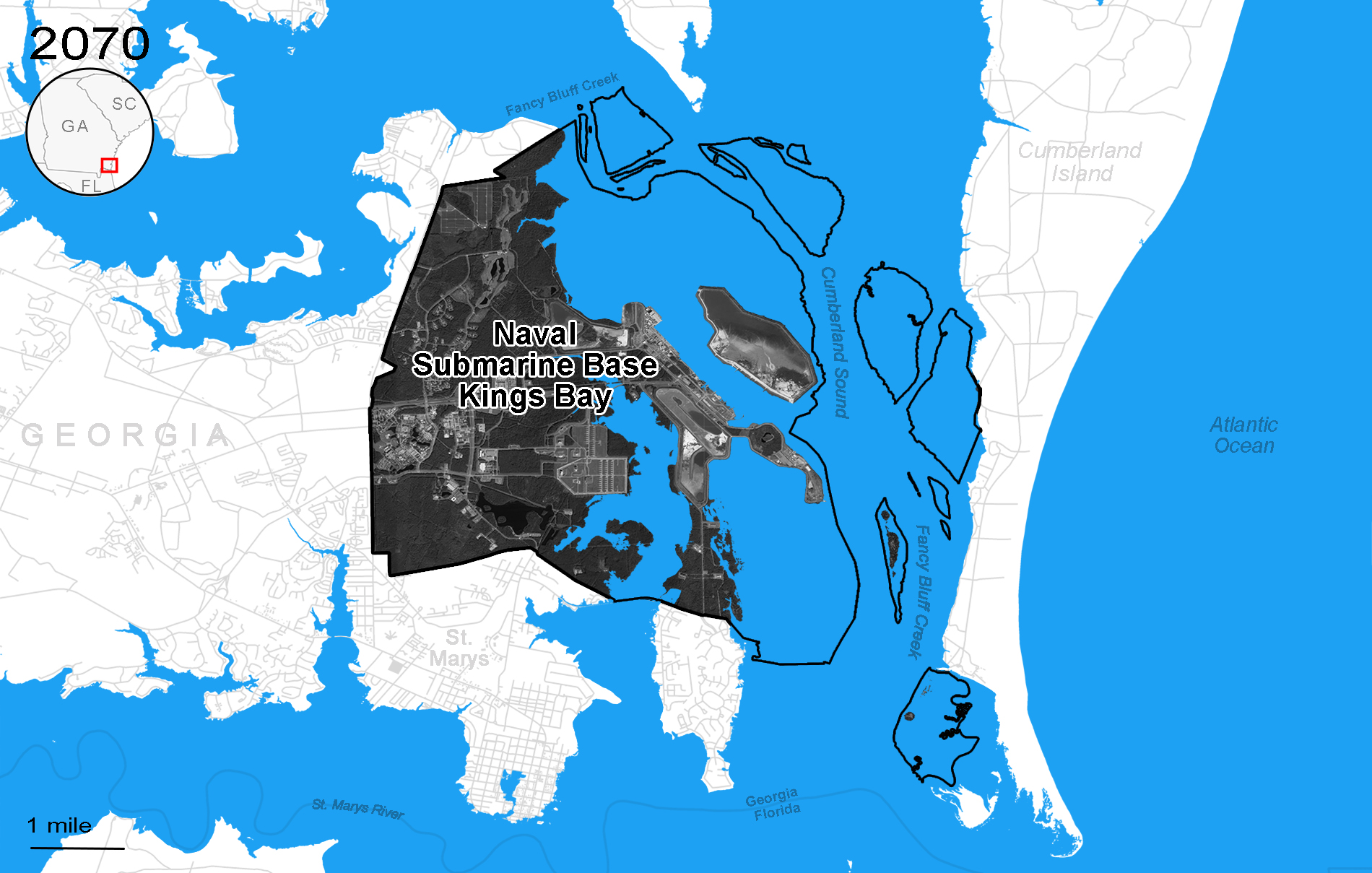
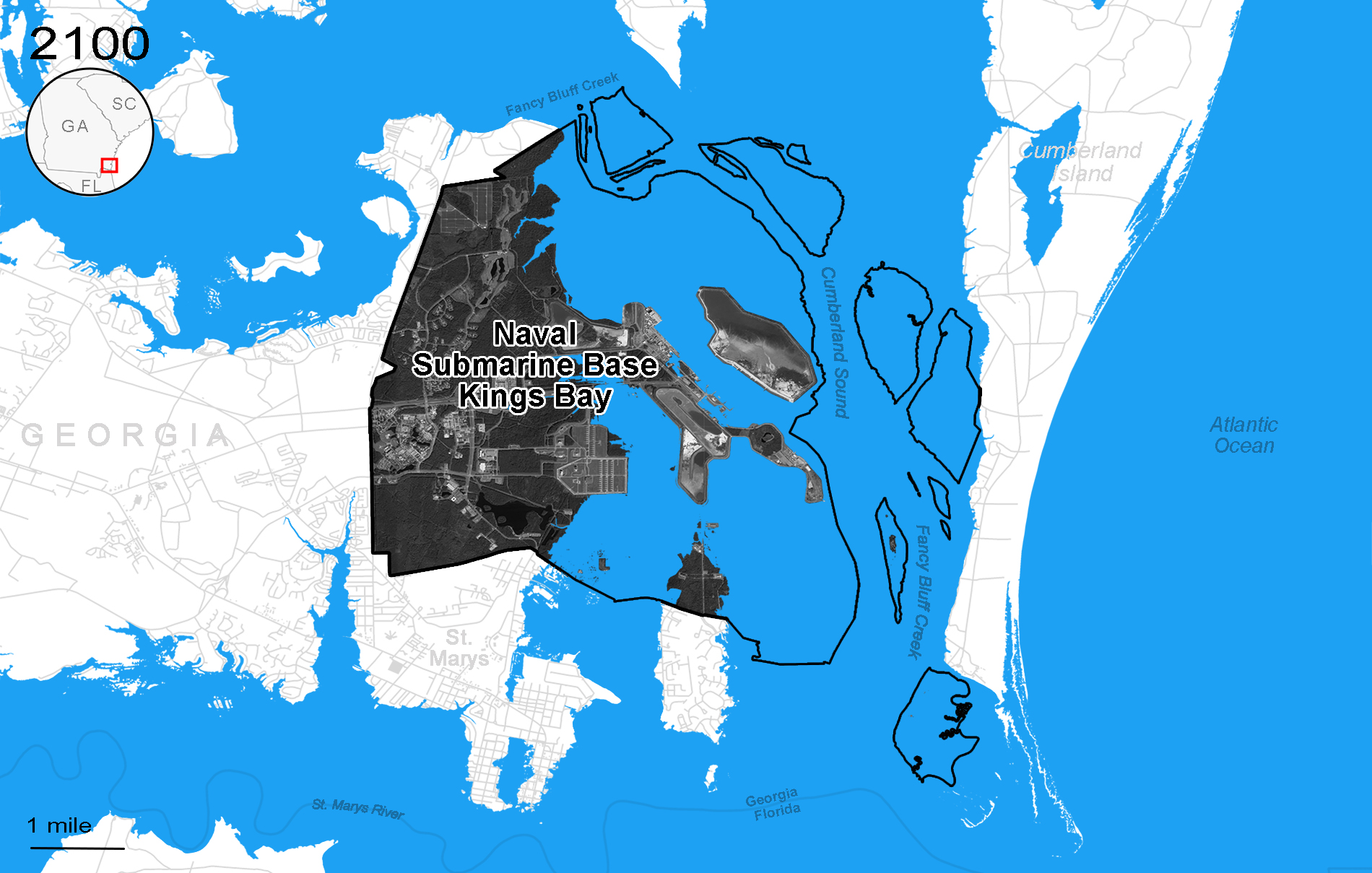
Source: National Oceanic and Atmospheric Administration; Union of Concerned Scientists
5. Naval Air Station Oceana Dam Neck Annex
Naval Air Station Oceana hosts the Naval Special Warfare Development Group and provides training to Navy pilots. Because of the low-lying typography of the Hampton Roads, Virginia region, Dam Neck Annex is very vulnerable to sea level rise and high tide flooding. In the highest scenario, Dam Neck is expected to experience seven feet of sea level rise by 2100.
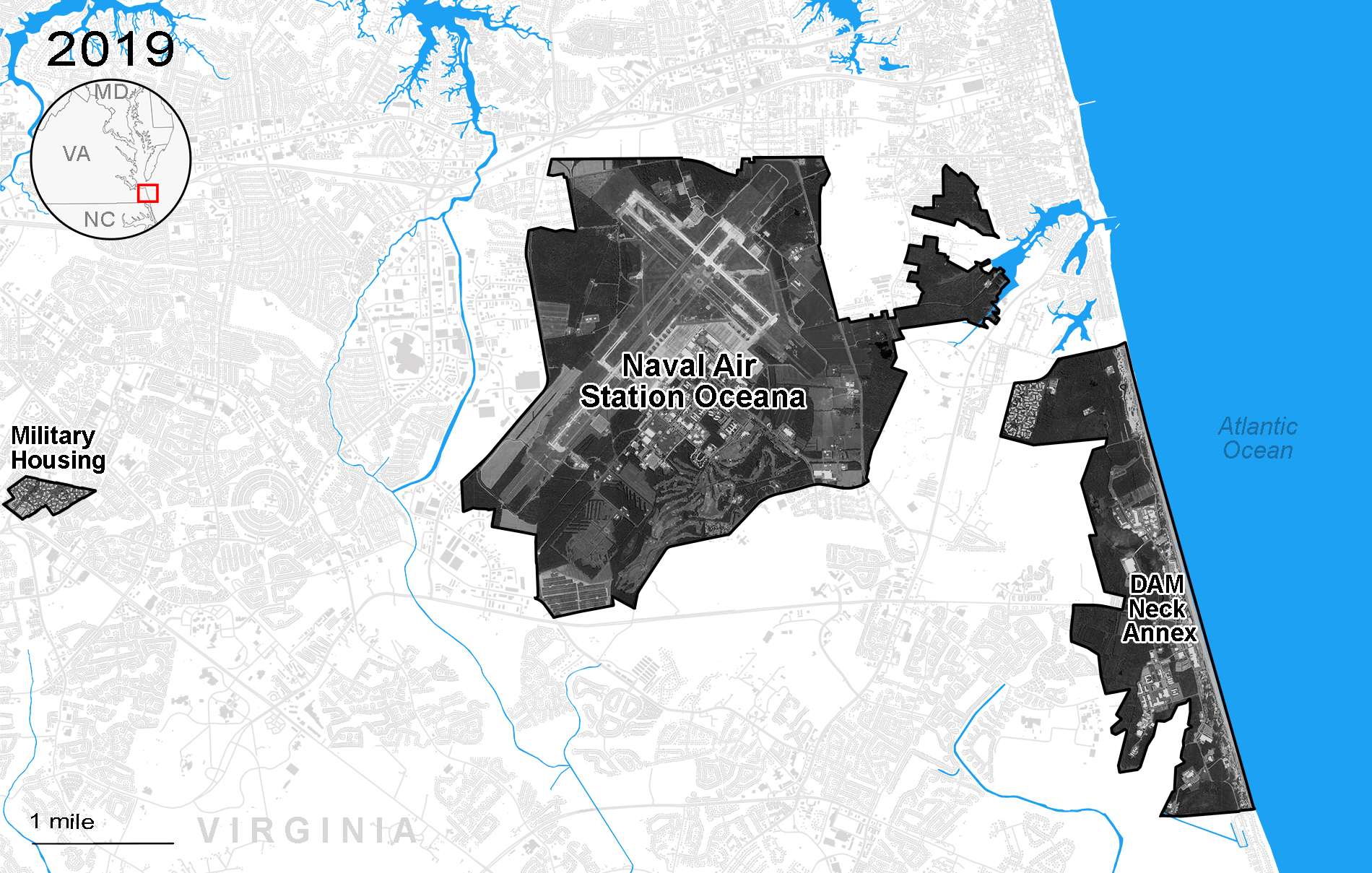
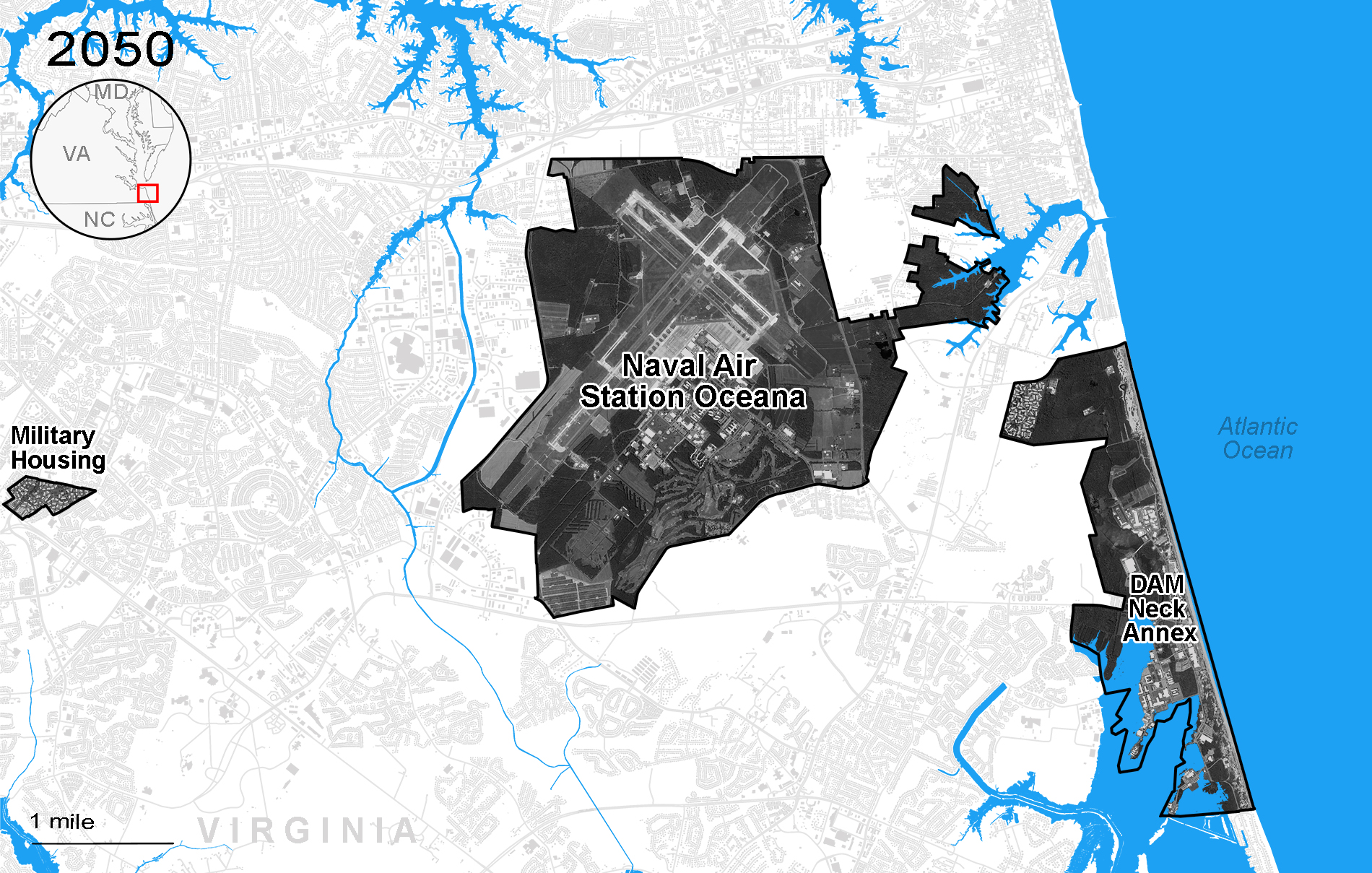
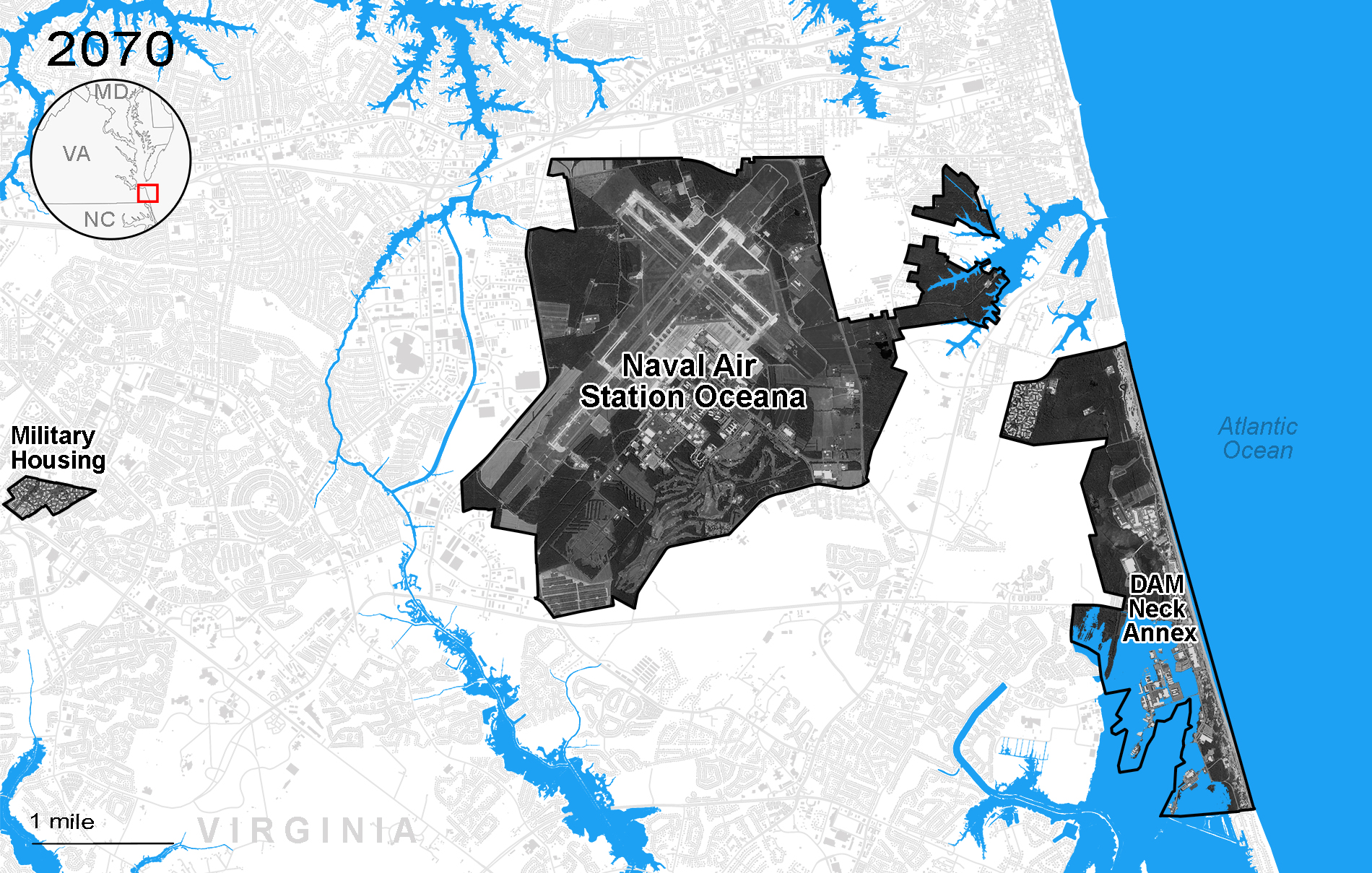
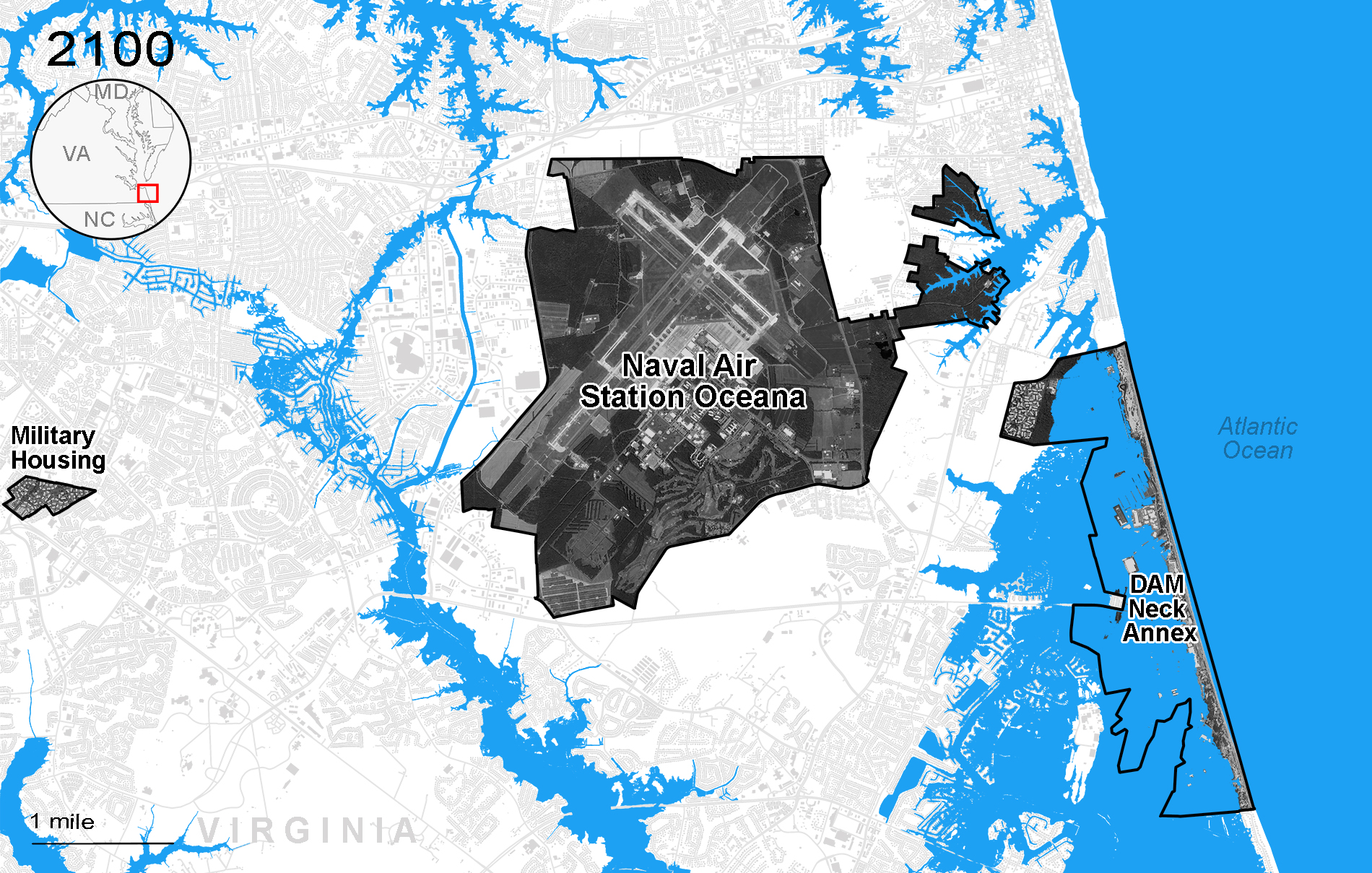
Source: National Oceanic and Atmospheric Administration; Union of Concerned Scientists